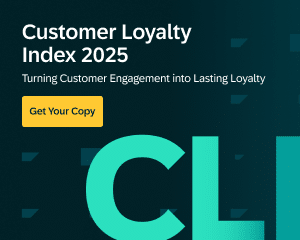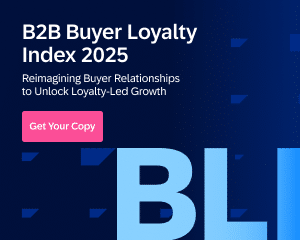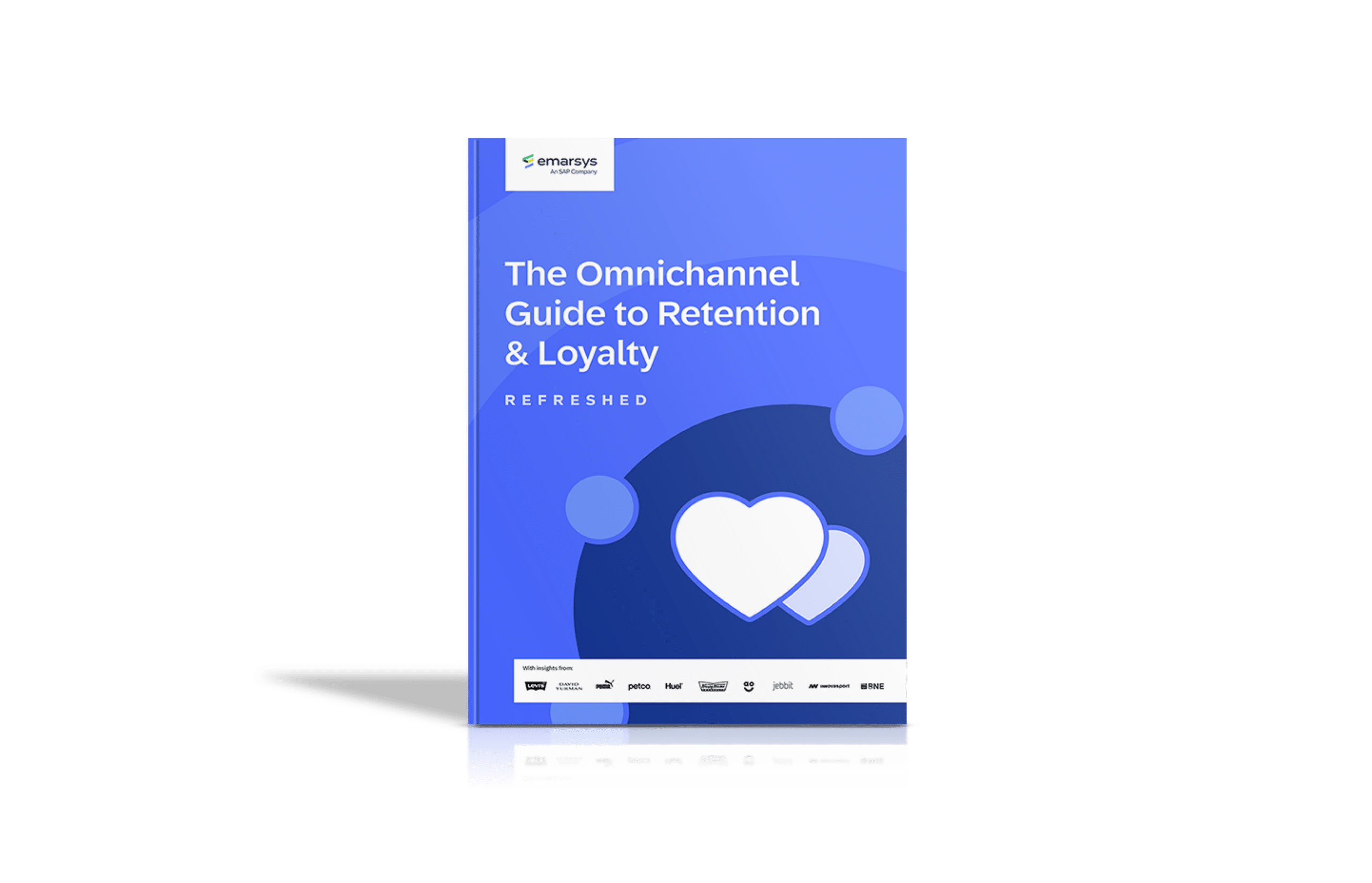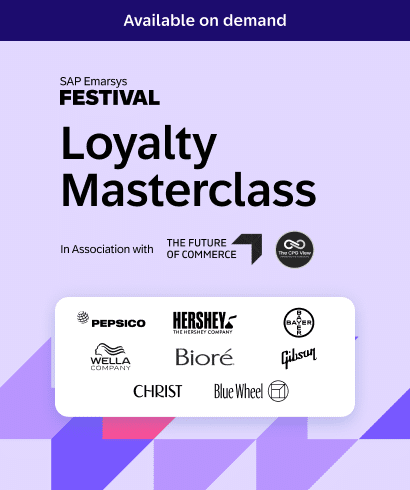Picture a potential buyer browsing your site—just a few clicks from checkout—when something distracts them and they abandon their cart. E-commerce brands know this all too well.
Right now, the worldwide average abandoned cart rate sits at over 73%. If you want to turn these near-misses into lasting relationships, you’ll need the right strategy.
By unifying data sources (e.g., website behavior, email engagement, loyalty programs) and applying dynamic, personalized messaging, you can gently address customer concerns and nudge them toward completing their purchases.
In this guide, we’ll discuss eight best practices for leveraging data, personalization, and timing to attract lost shoppers and the benefits of unifying data with platforms like SAP Emarsys Customer Engagement.

1: Unify Customer Data to Power Personalization
Goal: Consolidate customer data into a single, unified view to create highly personalized and effective abandoned cart emails.
How it works:
Customers expect brands to recognize their preferences and anticipate their needs. However, scattered data often prevents businesses from delivering the right message at the right time.
By integrating data sources such as:
✔ Web analytics (browsing behavior, time spent on pages, exit intent)
✔ Past purchases (order history, frequency, preferences)
✔ Loyalty program engagement (points earned, redeemed offers, VIP status)
Businesses can create a comprehensive customer profile that powers dynamic and relevant abandoned cart emails.
Technology in action:
Using a customer engagement platform like SAP Emarsys, brands can:
- Centralize customer, sales, and product data into a single customer view
- Connect with business intelligence tools for in-depth analysis and visualization
- Automate personalized email workflows to improve efficiency and execution
This enables marketing teams to send hyper-personalized abandoned cart emails that go beyond generic reminders. Instead of a simple “You left something behind” message, customers receive tailored content that:
- Highlights their abandoned product(s) with images, descriptions, and reviews
- Recommends similar or complementary items based on past purchases and browsing history
- Addresses potential concerns, such as shipping costs or stock availability
Why it matters:
📌 Personalization leads to results – Research shows that 80% of consumers are more likely to make a purchase from brands that offer personalized experiences.
📌 Customers feel understood – Rather than feeling like just another transaction, they see that the brand recognizes their preferences and shopping behaviors.
📌 Higher conversion rates – By sending relevant, data-driven messages, businesses increase the likelihood of customers finalizing their purchases.
With unified data and automation, abandoned cart emails become smarter, more engaging, and more effective—turning near-misses into successful sales.
2: Focus on Optimal Email Timing and Frequency
Goal: Send timely nudges that reignite a shopper’s interest without overwhelming them. The timing and frequency of abandoned cart emails are crucial to their effectiveness.
Follow up quickly
An email sent within an hour of cart abandonment often reaches buyers while they are still considering the product. This prompt response captures their attention when interest is fresh, increasing the likelihood of conversion.
However, timing must be strategic. Sending emails too soon may feel intrusive, while waiting too long may result in lost momentum. Customer behavior patterns and preferences should guide send times to maximize engagement.
Deliver sequenced reminders
A well-structured abandoned cart email sequence typically includes 2-3 emails sent at carefully timed intervals:
- First email (within 1 hour): A gentle reminder about the items left behind.
- Second email (12-24 hours later): Includes additional product information, customer reviews, or social proof to address potential concerns.
- Final email (24-48 hours later): Introduces a stronger incentive (e.g., limited-time discount, low-stock warning) to create urgency.
Pro tip: Using a discount in your abandoned cart automation? To avoid customers gaming the system, add a check in your email flow to ensure customers haven’t received a code in the last few days.
Use data to power your scheduling
Rather than relying on generic timing rules, brands should analyze open and click rates to determine the best-performing timeframes for different customer segments.
By tracking customer response patterns, businesses can:
- Adjust send times for maximum impact
- Avoid over-messaging that leads to email fatigue
- Personalize timing strategies based on individual engagement history
With a unified customer view, brands can refine email timing to better align with each shopper’s unique preferences and behaviors, further increasing conversion rates.
Learn more about timing with our guide: Is There A Best Time To Send Marketing Emails?

3: Seal the Deal with Compelling Incentives and Clear CTAs
Goal: Provide extra motivation to encourage shoppers to return to their carts and complete their purchases.
Choose the right incentive
Different incentives appeal to different audiences. The key is to select offers that resonate with your customers and align with your overall business strategy. Effective incentives include:
- Discounts – A small percentage off can nudge hesitant buyers.
- Free shipping – Helps remove a common barrier to purchase.
- Loyalty perks – Rewarding points for completing a purchase builds long-term engagement.
- Limited-time offers – Holiday or seasonal promotions create urgency. Make these incentives feel rare and exclusive to push customers towards conversion.
Rather than applying a one-size-fits-all approach, brands should segment customers based on purchase history and engagement levels to tailor incentives effectively. As with abandoned cart emails, be sure to put checks in place to avoid lost margins from savvy customers.
Pick strong CTAs that drive action
A clear and compelling call-to-action (CTA) should seamlessly guide customers back to their carts with minimal friction.
Best practices for effective CTAs:
- Use action-driven language: Examples include “Complete Your Purchase” or “Get Your Discount Now”.
- Create urgency: Phrases like “Only a Few Left!” or “Offer Expires Soon” increase motivation.
- Make CTAs visually prominent: Buttons should stand out in color and size while maintaining a mobile-friendly design.
Well-designed CTAs can significantly improve click-through rates and conversions by focusing customer attention on the next step.
Avoid overusing discounts
While discounts can drive short-term conversions, relying on them too often may train customers to abandon carts intentionally, expecting a deal later.
A data-driven approach is more sustainable, segmenting customers based on:
- Purchase history – High-value customers may not need discounts to convert. Consider spend-stretching incentives instead, or creative ways to reward them for their loyalty that are unique to your brand.
- Browsing behavior – Offering free shipping instead of a discount may be more effective.
- Engagement levels – Some shoppers may respond better to social proof rather than price cuts.
By tailoring incentives based on customer value and behavior, businesses can maximize both conversions and profitability without eroding their margins.
Learn more about AI-powered marketing segmentation strategies.

4: Leverage Enhanced Technology and Integrations
Goal: Leverage advanced e-commerce platforms to unify data, automate email workflows, and optimize abandoned cart recovery.
Break down data silos for better personalization
Many businesses struggle with fragmented customer data, making it difficult to deliver relevant and timely abandoned cart emails. By integrating data sources—including website behavior, purchase history, and email engagement—brands can establish a single source of truth for each customer.
This unified view enables more precise targeting and personalized messaging, helping businesses recover more lost sales.
Leverage the power of automation and real-time syncing
Beyond personalization, integrating the right technology stack brings efficiency and scalability to abandoned cart email strategies:
- Automated email workflows ensure timely follow-ups without manual intervention.
- Dynamic content generation personalizes each email with product recommendations, price updates, or availability alerts.
- Real-time data synchronization keeps inventory, customer interactions, and cart data up to date.
By leveraging these capabilities, marketers can scale their recovery efforts and ensure every email reaches the right customer with the most relevant message.
Choose the right email technology platform
For CMOs evaluating technology investments, selecting the right platform is critical. Key features to look for include:
✔ Seamless integration with existing e-commerce, CRM, and email marketing systems.
✔ Advanced analytics to measure performance and optimize recovery campaigns.
✔ AI-powered automation for predictive personalization and segmentation.
Platforms like SAP Emarsys provide these capabilities, allowing brands to streamline abandoned cart recovery while maximizing efficiency and revenue potential.
5: Use Advanced Personalization to Increase Conversions
Goal: Go beyond basic name personalization by tailoring abandoned cart emails to each shopper’s unique preferences, behaviors, and concerns.
Implement dynamic content
Static emails no longer cut it—customers expect highly relevant messaging that adapts to their shopping behavior. Using dynamic content, businesses can:
- Showcase abandoned products with images, descriptions, and reviews.
- Recommend complementary items based on browsing and purchase history.
- Address potential concerns (e.g., sizing, shipping costs, or product availability).
This data-driven approach ensures that every email feels tailored and engaging, rather than generic and impersonal.
Use behavioral segmentation for targeted messaging
A one-size-fits-all abandoned cart email won’t work for every shopper. Segmenting customers based on their behavior allows for more effective recovery strategies.
For example:
- First-time abandoners may need reassurance, such as social proof or a simple reminder.
- Frequent shoppers might respond better to loyalty-based incentives rather than discounts.
- Repeat abandoners could be nudged with a limited-time offer or a message addressing potential pain points.
By segmenting audiences and customizing messaging, businesses can increase conversions and build stronger customer relationships.

6: Take a Customer-Centric Approach to Abandoned Carts
Goal: Treat cart abandonment as an opportunity to support customers, not just recover lost sales. By addressing concerns and adding value, businesses can build trust and long-term loyalty.
Provide educational content
Many shoppers abandon their carts because they are undecided or have unanswered questions. Offering helpful content can ease uncertainty and increase confidence in the purchase. Consider including:
- Product details & specifications to reinforce value.
- Customer reviews & testimonials to provide social proof.
- Q&A sections addressing common sticking points (e.g., “How long does shipping take?” or “What’s the return policy?”).
Rather than a simple “You forgot something” message, these emails offer value, encouraging the shopper to revisit their cart.
Use solution-focused messaging
Cart abandonment is often driven by hesitations—concerns about pricing, returns, or convenience. Instead of focusing solely on the sale, address potential barriers by:
- Highlighting easy returns & exchanges for risk-free shopping.
- Offering store pickup options to improve convenience.
- Providing live chat or customer service links for real-time assistance.
By proactively solving pain points, brands enhance the shopping experience and increase conversions without resorting to aggressive sales tactics.
Strengthen long-term loyalty
A customer-centric approach goes beyond the transaction. Even if a shopper doesn’t complete their purchase immediately, positive interactions increase the likelihood of future conversions.
Ways to build brand loyalty through abandoned cart emails include:
- Loyalty perks: Remind customers about points earned or special member discounts.
- Personalized recommendations: Suggest alternative products if the abandoned item is out of stock.
- Follow-up support: A friendly “Need help deciding?” email can keep the conversation going.
When customers feel supported rather than pressured, they trust the brand more and are more likely to return—turning one-time shoppers into repeat buyers.
7: Use AI and Predictive Analytics to Maximize Conversions
Goal: Leverage artificial intelligence (AI) to anticipate shopper actions, personalize messaging, and optimize send times for abandoned cart emails.
Predict customer behavior for smarter targeting
Not all shoppers abandon their carts for the same reason—some need a small nudge, while others require a stronger incentive. Predictive analytics helps identify which customers are most likely to convert and what type of messaging will be most effective.
By analyzing historical data and behavioral patterns, AI can:
- Segment customers based on likelihood to complete a purchase.
- Determine which shoppers need discounts vs. social proof.
- Identify those who may require additional touchpoints before converting.
This allows businesses to focus efforts on high-value customers, reduce unnecessary discounts, and increase overall recovery rates.
Optimize email timing with AI
AI-powered platforms analyze engagement trends to determine the best time to send each abandoned cart email. Instead of relying on generic timing rules, AI can:
- Adjust send times based on when a shopper is most likely to engage.
- Analyze real-time customer activity to trigger emails when interest is high.
- Prevent over-messaging by ensuring emails are sent at optimal intervals.
With AI-driven send-time optimization, abandoned cart emails are delivered when they are most likely to convert, improving open rates and click-through rates.
Continuously improve campaign performance
AI-powered platforms like SAP Emarsys enable ongoing performance optimization by:
- Tracking open, click, and conversion rates to refine messaging.
- A/B testing different subject lines, incentives, and CTA placements.
- Automatically adjusting personalization strategies based on new customer data.
By constantly learning and adapting, AI ensures that abandoned cart recovery campaigns become more effective over time, increasing conversions without increasing manual effort.
8: Choose the Right Technology Partners for Cart Recovery Success
Goal: Collaborate with technology providers that align with your brand’s needs and enhance abandoned cart recovery efforts.
Best practice #1: Evaluate platforms for key capabilities
Not all marketing automation platforms are created equal. When selecting a technology partner, businesses should assess:
- Integration flexibility – Does the platform seamlessly connect with your existing e-commerce, CRM, and analytics tools?
- Personalization & AI capabilities – Can it segment audiences and tailor messaging based on behavioral data?
- Automation & scalability – Does it support triggered email workflows and advanced segmentation to improve efficiency?
- Analytics & reporting – Can it track performance metrics, test different email strategies, and provide real-time insights?
A strong technology partner should simplify data unification, enhance personalization, and automate email sequences, ensuring a seamless and effective abandoned cart strategy.
Best practice #2: Seek expertise & ongoing support
Beyond software capabilities, the right partner should provide:
- Strategic guidance on best practices and evolving trends.
- Industry expertise to help navigate challenges unique to your sector.
- Dedicated support to troubleshoot issues and optimize performance.
With a trusted technology partner, businesses can refine their abandoned cart email strategies over time, adapting to new insights and improving recovery rates.
Best practice #3: Align technology with business goals
The ideal partner isn’t just a service provider—they should be an extension of your team, helping to:
- Maximize ROI on email marketing by improving automation and personalization.
- Ensure long-term scalability as your business grows.
- Drive higher engagement and conversions through AI-powered insights.
By forming strategic partnerships with technology providers like SAP Emarsys, businesses can recover more revenue, reduce manual effort, and create data-driven abandoned cart campaigns that continually improve over time.
Real World Examples in Action
Let’s take a look at some brands who’ve mastered the art and science of abandoned cart marketing:
Total Tools: A data-driven approach with SAP Emarsys
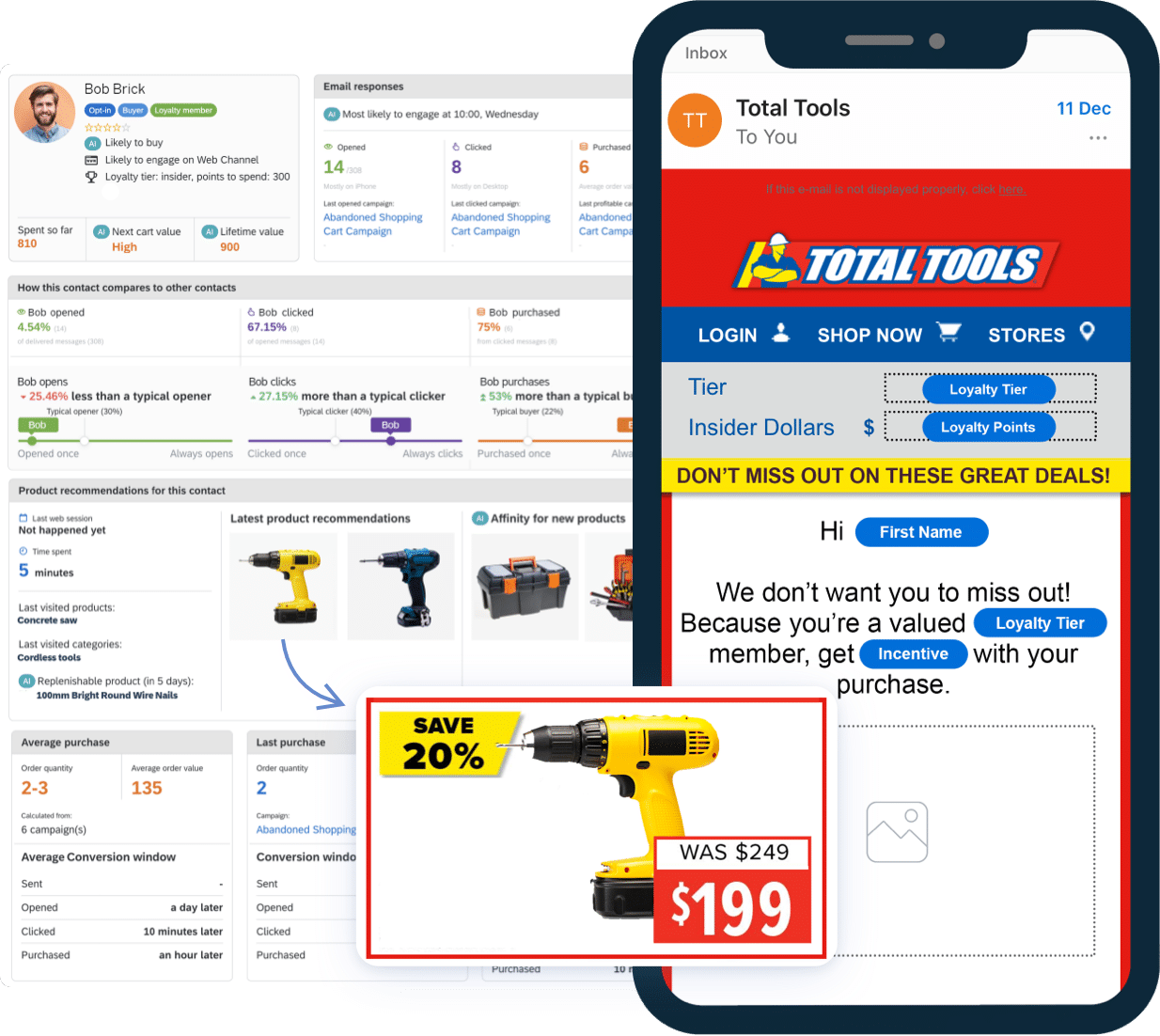
Total Tools is Australia’s largest professional tool retailer, serving tradespeople and DIY enthusiasts with a vast range of power tools, hand tools, and accessories. With over 100 stores nationwide and a strong e-commerce presence, the brand needed to unify its customer experience across multiple touchpoints.
Challenges
Total Tools faced several roadblocks in delivering a seamless, personalized experience:
- Their martech stack lacked integration, preventing a unified customer view across channels.
- Despite engaging customers via email, SMS, and online search, their messaging wasn’t coordinated, leading to fragmented interactions.
- Their customer data was siloed, limiting their ability to understand buyer behavior and personalize marketing strategies.
- Their loyalty program lacked perceived value, causing friction in customer retention.
Solution
To overcome these challenges, Total Tools partnered with SAP Emarsys to unify their data and streamline their marketing efforts:
- Integrated all customer data into a single customer view, enabling real-time personalization.
- Automated cart recovery emails with personalized triggers and strategic incentives, improving engagement.
- Leveraged SAP Emarsys automation center and pre-built tactics to enhance omnichannel capabilities.
- Improved the loyalty program experience by aligning rewards with customer behaviors and interactions.
Impact
The integration with SAP Emarsys led to immediate and measurable improvements:
✔ 20+ automated data-driven workflows launched, significantly improving efficiency.
✔ 2x increase in click-through rates, demonstrating stronger customer engagement.
✔ Reduced reliance on email by adopting a channel-agnostic strategy, ensuring customers received relevant messages via their preferred touchpoints.
✔ Relaunched the Insider Rewards loyalty program, fully integrating it across channels for a more engaging, personalized experience.
With these new capabilities, Total Tools transformed their marketing approach, ensuring that customers receive the right message at the right time, on the right channel.
Discover the complete success story of how Total Tools unifies data to drive omnichannel experiences that boost loyalty.
Ryderwear: Scaling abandoned cart recovery with automation
Ryderwear is a global fitness apparel brand catering to athletes, bodybuilders, and gym enthusiasts. With a strong e-commerce presence, the brand needed a more effective and scalable approach to abandoned cart recovery to maximize revenue from online shoppers.
Challenges
Despite having a loyal customer base, Ryderwear’s manual approach to cart recovery was inefficient and inconsistent, leading to lost sales. The key challenges included:
- Lack of automation – Follow-up emails weren’t sent consistently, resulting in missed opportunities to recover abandoned carts.
- Low revenue contribution from email marketing – Email accounted for just 4-5% of total revenue, limiting its impact on overall sales.
- Lack of personalization – Generic email sequences failed to address individual abandonment reasons, reducing engagement.
Solution
To optimize its abandoned cart strategy, Ryderwear integrated SAP Emarsys’ automated email workflows with:
- Sophisticated segmentation, allowing different messaging for first-time vs. repeat abandoners.
- Triggered email sequences, ensuring timely follow-ups without manual effort.
- Personalized content, dynamically adjusting based on shopping behavior and cart value.
By automating the cart recovery process, Ryderwear could scale its email marketing efforts while delivering more relevant messaging to each shopper.
Impact
The results were transformational:
✔ Email marketing revenue surged from 4-5% to nearly 20% of total revenue.
✔ Abandoned cart emails became a major revenue driver, improving recovery rates significantly.
✔ 80% of email revenue now comes from automated workflows rather than manual campaigns.
✔ Overall email revenue increased by 300%, showcasing the power of AI-driven automation.
By implementing SAP Emarsys, Ryderwear turned abandoned carts into high-converting sales opportunities, proving that automation and personalization are key to scaling e-commerce success.
Discover how Ryderwear generated 80% of revenue from automations versus campaigns, resulting in a complete reversal in just two years and boosted email revenue by 300%. Learn more.
Booktopia: A Customer-First Approach to Cart Recovery
Booktopia is Australia’s leading online bookstore, offering a vast selection of books across multiple genres. With a strong focus on customer satisfaction, the brand needed to refine its abandoned cart recovery strategy to drive conversions without compromising long-term loyalty.
Challenges
While Booktopia aimed to increase abandoned cart conversions, the team faced key concerns:
- Lack of personalization – Generic recovery emails failed to engage different types of customers.
- Risk of discount dependency – Overuse of incentives could encourage intentional cart abandonment, leading to unsustainable discount-driven sales.
- Balancing short-term wins with long-term loyalty – Pushing for an immediate sale risked weakening customer trust and retention.
Solution
To address these challenges, Booktopia shifted to a customer-first strategy by:
- Personalizing cart recovery emails with relevant product details and tailored messaging.
- Providing value-driven content, including book reviews, author insights, and recommendations.
- Offering assistance instead of sales pressure, including customer support options and flexible return policies.
- Segmenting audiences, ensuring that first-time shoppers and repeat customers received different follow-up strategies.
By prioritizing helpfulness over hard selling, Booktopia turned abandoned cart emails into a trusted customer touchpoint rather than a transactional nudge.
Impact
This strategic shift led to:
✔ Stronger customer loyalty, as shoppers felt supported rather than pressured.
✔ Improved brand reputation, reinforcing Booktopia’s position as a customer-centric retailer.
✔ Sustainable revenue growth, proving that cart recovery doesn’t need to rely on discounts to be effective.
By focusing on value, trust, and long-term relationships, Booktopia enhanced customer retention while still recovering lost sales, making its abandoned cart strategy both effective and sustainable.
